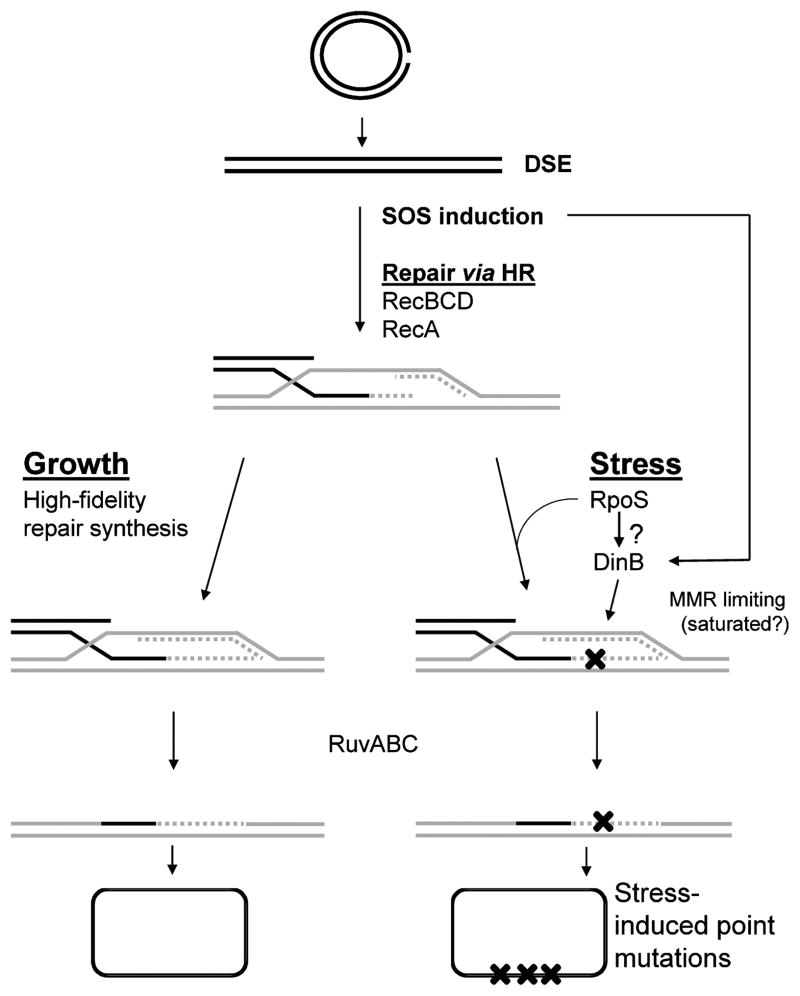FIGURE 3.
A switch from high-fidelity to error-prone DNA double-strand-break repair underlies stress-induced mutagenesis in the Lac system. Double-strand breaks are repaired via high-fidelity HR-DSBR in cells growing in optimal conditions. However, in growth-limited cells expressing the RpoS stress-response regulon, DSBs are repaired mutagenically under the control of RpoS, which somehow licenses the use of the DinB error-prone polymerase, which is upregulated by the SOS and RpoS responses. Mismatch repair (MMR) becomes limiting under this condition, and fails to correct many DNA polymerase errors, we suggest due to saturation/titration of MutL protein by excess DNA polymerase errors (described in the text). Single lines represent strands of DNA except in the two circular molecules at the bottom, where they represent whole bacterial chromosomes composed of double-stranded DNA. X’s represent DNA polymerase errors, and then mutations in the bottom-most molecule.

